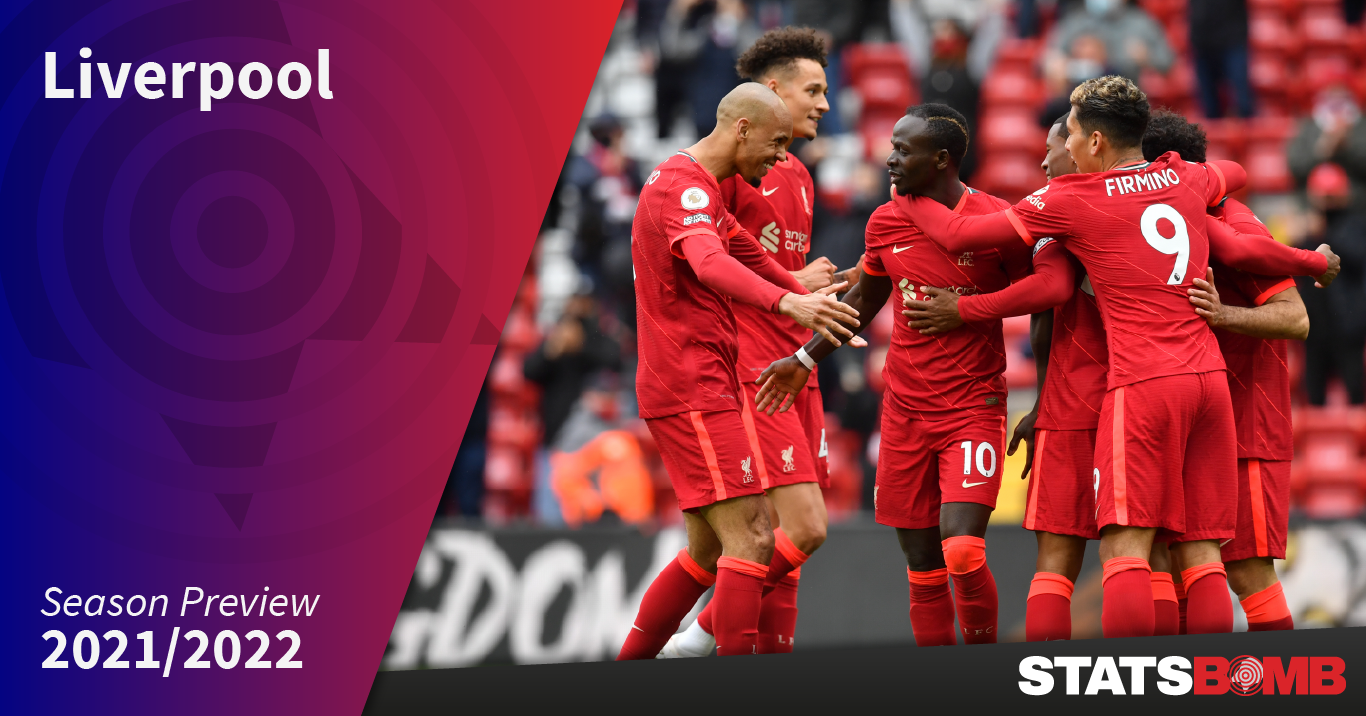After five seasons of relentless progress under Jürgen Klopp, culminating in that precious 19th title, Liverpool fell to their lowest points total since the first of his tenure. Third place and a Champions League quarter-final would generally be a perfectly acceptable season, but it represented a clear decline from 97 and 99 points in the prior two seasons, plus a sixth European Cup and World Club Cup trophy for good measure. The good news is that the route to that finish was unprecedented and circuitous, which promotes optimism for a new season and a rebound into domestic and European contention once more.
Until Alisson trotted forward in the 95th minute at the Hawthorns, the most memorable thing about Liverpool’s season was the injury crisis that plagued them through most of the season. The innocent days of September as Fabinho filled in alongside Virgil van Dijk at Stamford Bridge was in hindsight a clear example of first act foreshadowing.
Not only did they lose their defensive bedrock in van Dijk, they then proceeded to lose centre back after centre back as the season progressed (including the midfielders succonded to the backline). Jürgen Klopp filling in at the back was a mix of gallows humour and momentary consideration at one point. Throw in injuries in the midfield ranks to the mix and that 3rd place and European quarter-final takes on a different complexion.

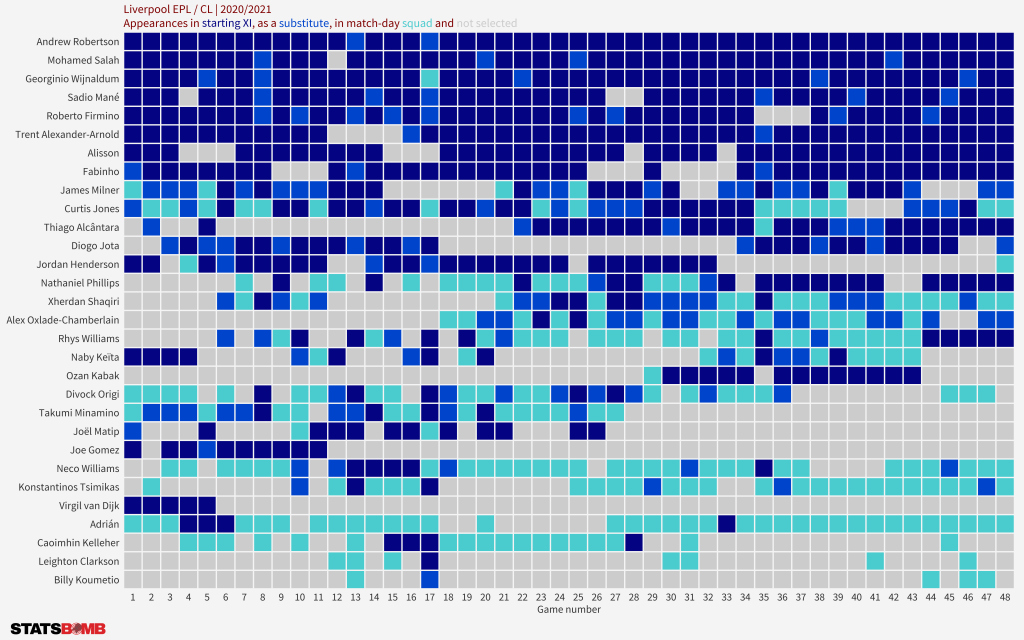
For all the early-season injuries and absences, Liverpool actually found themselves top of the league as Santa rolled into town (for the third consecutive year). Nine wins, four draws and the solitary loss in the debacle at Villa Park put them four points clear of Leicester and eight clear of Manchester City (albeit having played a game more).
It took just a single month for their hard work to be undone.
Three points in five games saw them drop out of the top-four and fall seven points behind the eventual title winners. That wasn’t even the worst of it: a further run of six losses in seven games left them in eighth and seven points behind fourth place. Suddenly a team that had lost nine league games in three seasons had lost nine in 28 (and eight in the last 12). And still the roller-coaster ride wasn’t over, as 26 points in 10 games to finish the season sent them into third place and 69 points - a mediocre season overall compared to the prior two seasons but a decent achievement given the context.
Looking under the hood at Liverpool’s metrics over the course of the season, we can identify four phases:
- Weaker defence combined with stronger attack
- Improved defence, but with a weaker attack
- A worsening defence while the attack remained stable
- The attack lifts off to close the season
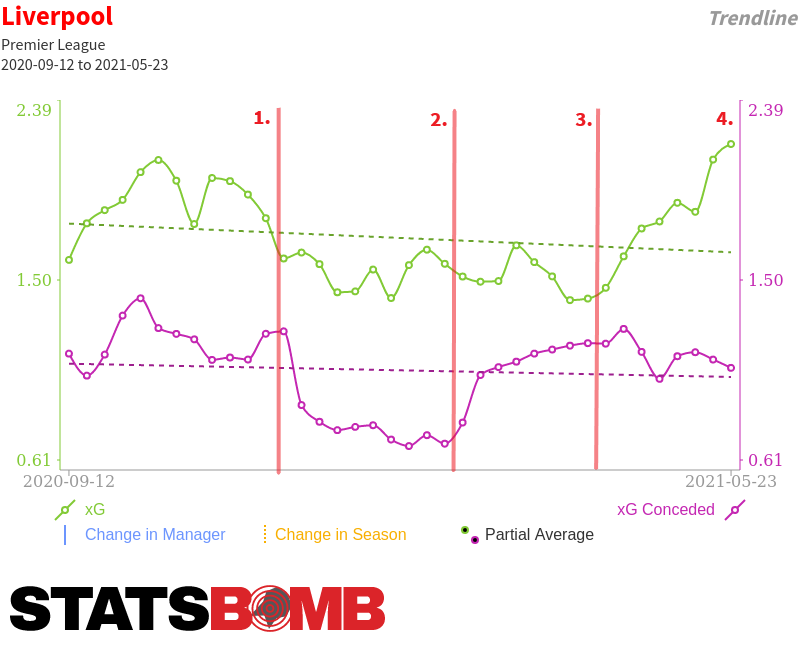
As much as injuries played a role in Liverpool’s season, the thing that truly cratered their season was a massive finishing slump after putting seven goals past Crystal Palace at Selhurst Park in December.
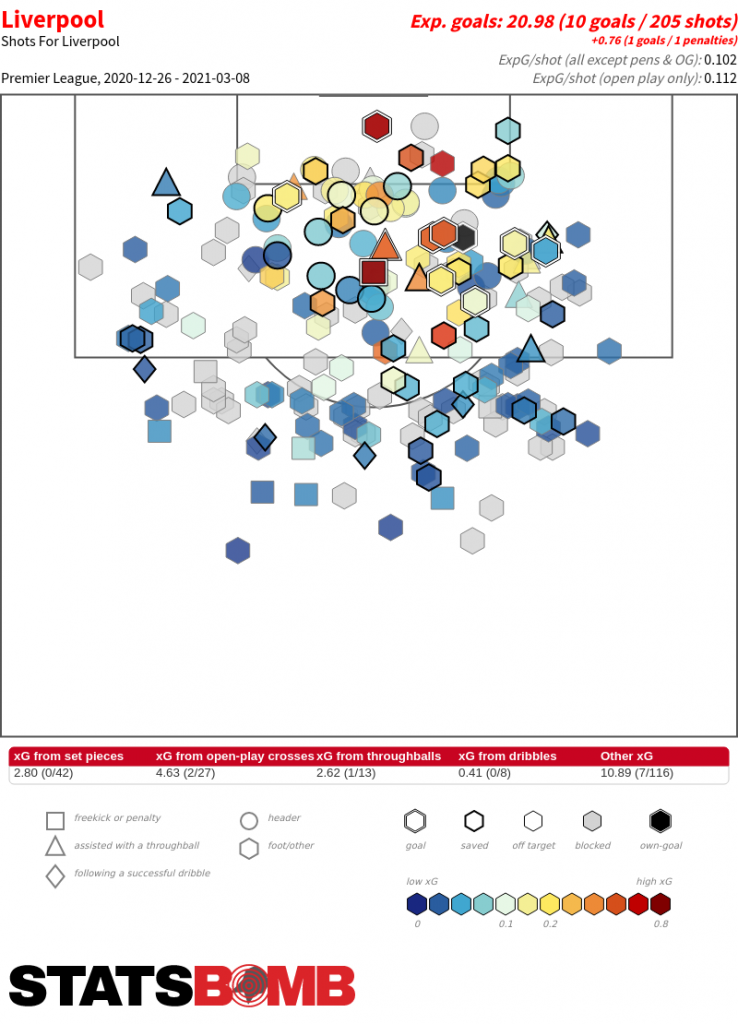
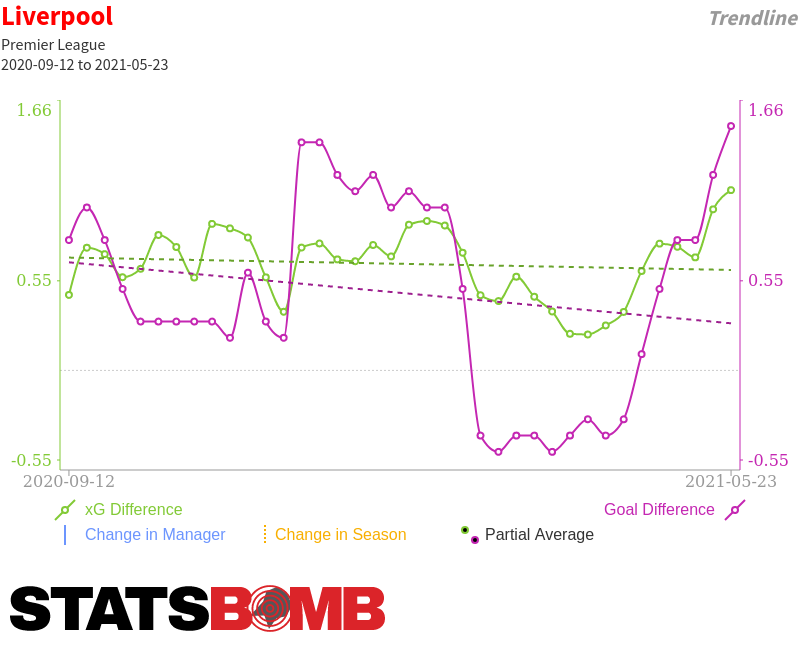
Overall, Liverpool’s metrics were strong, with the best non-penalty xG on the attacking end offsetting the fifth-best defensive record, equating to the second-best non-penalty xG difference over the season. From the perspective of xG, their numbers were remarkably similar to the title-winning season, although winning the league with seven games to spare plays a part here.

Aside from the goal-scoring skewing in the wrong direction, the biggest shift was in their post-shot xG; in 2019/20 the team was extremely proficient at challenging (and defeating) opposition goalkeepers, while also reducing the shot-stopping workload for Alisson and Adrian. Those positive skews reversed in 2020/21, and the aforementioned finishing slump exacerbated the issues on the attacking end. In old money, Liverpool’s shot-on-target differential declined from 115 in 2019/20 (+3.0 per game) to 64 in 2020/21 (+1.7 per game), despite an increase in their overall shot differential. This was a classic example of taking the rough with the smooth, albeit with the smooth ending a 30-year obsession with the title.
Dancing through midfield
One question heading into last season was how the signing of Thiago would impact Liverpool’s play. While the midfield incumbents were certainly no slouches in possession, the primary playmaker played at right-back rather than in the midfield. After an injury-disrupted first-half of the season, Thiago himself grew into his role in the team and dovetailed nicely with Fabinho when the latter returned to midfield during the closing stages of the season.
As expected, he offered strong ball progression and chance creation from midfield, although the assists didn’t reflect his underlying numbers. An intriguing aspect of his passing was those cross-field passes from right-to-left, which are very much Trent’s music. To an extent, that ate into Trent’s passing profile, as while those diagonals were still his most distinctive pass-type, they weren’t quite as prevalent as prior seasons.
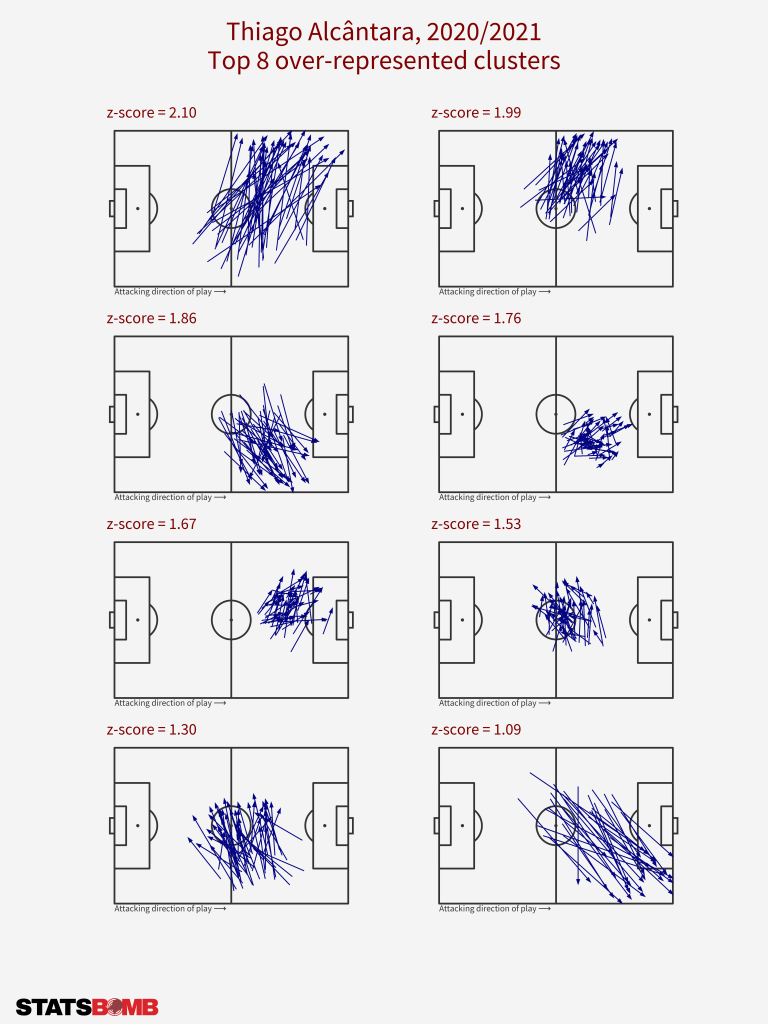
There was an added dimension to Liverpool’s midfield last season; a greater emphasis on ball-carrying, particularly from Curtis Jones and Thiago. Using our On-Ball Value (OBV) model, we can illustrate this in the maps below and also compare at the player-level; Wijnaldum’s OBV from carries almost doubled year-on-year, while Jones performed at similar levels to noted ball-carrier Naby Keïta.
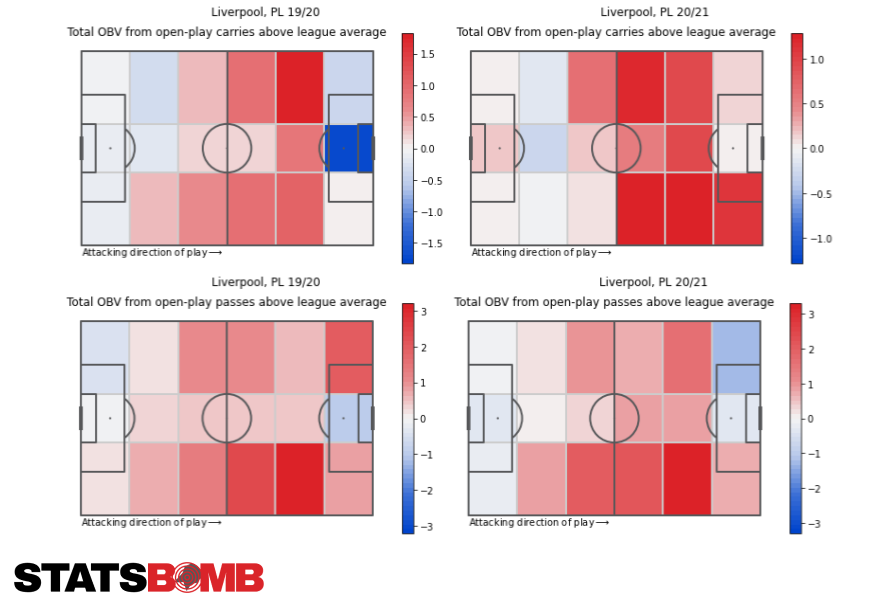
There was less emphasis on the full-backs in terms of xG assisted and OBV, particularly the left-hand side through Robertson. These tweaks resulted in broadly similar underlying metrics in the aggregate and, as with many trends over the past two years, it will be interesting to track how they evolve in a (hopefully) more normal season.
Fab-four?
For the first time since Philippe Coutinho’s departure, there are questions around the forward line of Mané, Firmino and Salah after Diogo Jota’s strong performances in his injury-hit debut campaign. The trio have essentially been ever-present when available, with Xherdan Shaqiri playing as part of a front-four in 2018/19 being the only real deviation from that template. Jota could supplant one of the incumbents, with Mané and Firmino being the most likely candidates according to the discourse. Alternatively, we could even see a new Liverpool-based fab-four emerge.
Examining the underlying process and outcomes, it’s clear that at least some of the whispers can be ascribed to the finishing streaks of said quartet. After consecutive seasons outpacing his xG, Mané came back down to earth in 2020/21, while Firmino continued a now three-season spell of undershooting his xG totals. Both had almost identical year-on-year underlying outputs in terms of xG and xG assisted though, and it’s safe to say that nobody was questioning their position while Liverpool cantered to a title.
On the other hand, Jota pulled out the neat trick of compounding strong underlying numbers with a hot finishing run after his own finishing woes in his final season at Wolves. Ironically, the one member of the quartet with fewer question marks from the commentariat was the one who showed a (slight) decline, although it’s hard to paint Salah’s numbers as anything but elite.

So, nothing to see here and we’re safe to file this as a nice problem to have?
Digging a little deeper through the prism of OBV paints a somewhat different picture regarding their performances, particularly in the case of Mané. His overall contribution declined sharply year-on-year, with his shooting accounting for ⅔ of the decline. The other major area of concern was his passing, as he moved from a net-positive contributor to a net-negative one; an increased number of turnovers and a decrease in his pass completion rate is symptomatic of this. Mané’s style of play can sometimes resemble something of a high-wire act – moments from something magical or maddening – and it seems he last season tipped more often towards the latter than the former.

While the above points towards some elements of concern, realistically Liverpool are in the enviable position of having four high-class, starting-calibre forwards with a complementary set of elite skills. Klopp even has the possibility of rotating the front-line without a significant reduction in quality, or tailoring the forward-line to certain situations and match-ups. Perhaps the natural order will shift over the course of the season, but the forward line provides both depth and quality at this point.
Transfers
From his assuredness on the ball and plug-and-playability across a number of roles, Gini Wijnaldum’s sheer robustness may well be the most keenly felt aspect of his departure. In the past two seasons, he was absent from one solitary EPL & CL squad, with 82 starts, ten substitute appearances and one match warming the bench. While the midfield options provide a good level of depth in terms of numbers and quality, several have had either long-term injuries or regular short-term absences over the past few seasons, so there is perhaps a degree of concern here.
Defensive reinforcements have arrived in 22-year old Ibrahima Konaté, who comes in from RB Leipzig. From a numbers perspective, perhaps the most eye-catching one is the shade under 2000 minutes he played in the Bundesliga & CL combined over the past two seasons, which is a quite magnificent trolling of the fanbase, it has to be said. He did, however, play close to a full season in 2018/19 as Leipzig finished with the Bundesliga’s best defensive record (and second-best by xG). He was generally in the squad last year but struggled for playing time in the second half of the season after returning from injury. Konaté profiles as an active front-foot defender, with Joël Matip being his closest parallel in the Liverpool squad, and like Matip he also enjoys carrying the ball forward.
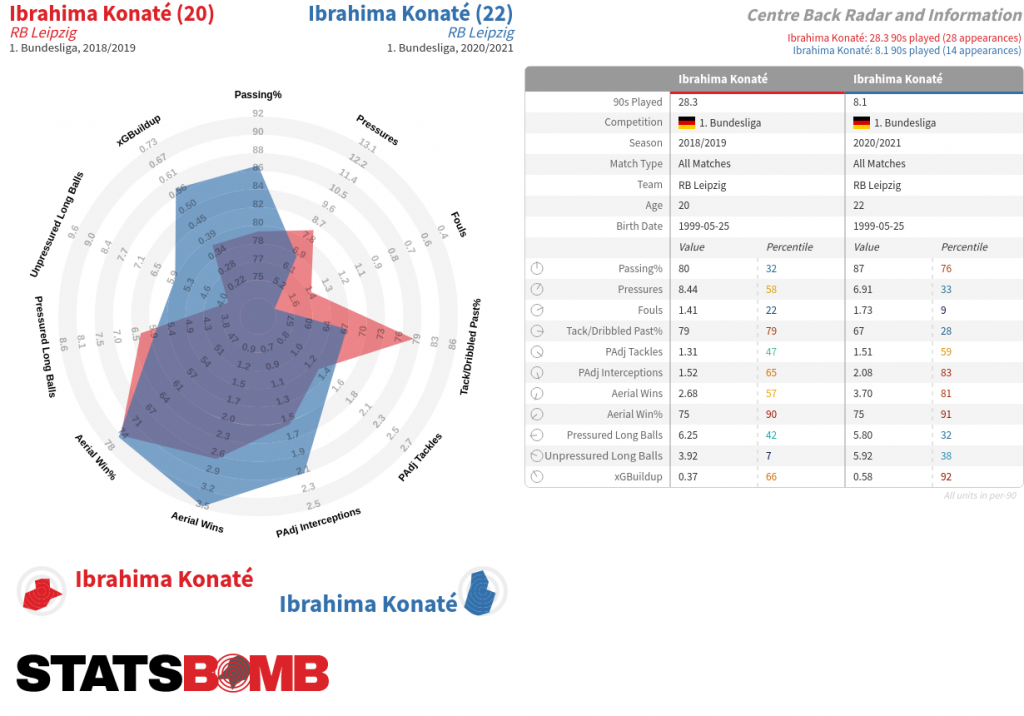
Konaté displayed notable strength in the air on a high volume of duels in the Bundesliga, but how well this translates to the Premier League is a key question if he is to find playing time early in his Liverpool career (Ozan Kabak’s strong aerial win percentage certainly didn’t translate during his short spell on Merseyside.) Based on the types of high passes usually made in the respective leagues and by Liverpool and RB Leipzig’s opponents, we can observe distinctive traits:
- England tends to be biased towards crosses into the box and longer passes into the final third
- Germany generally sees shorter passes within the middle third of the pitch, and a much smaller emphasis on crosses into the box
Such traits point towards a somewhat different challenge. It’s likely a period of adaptation will be required.
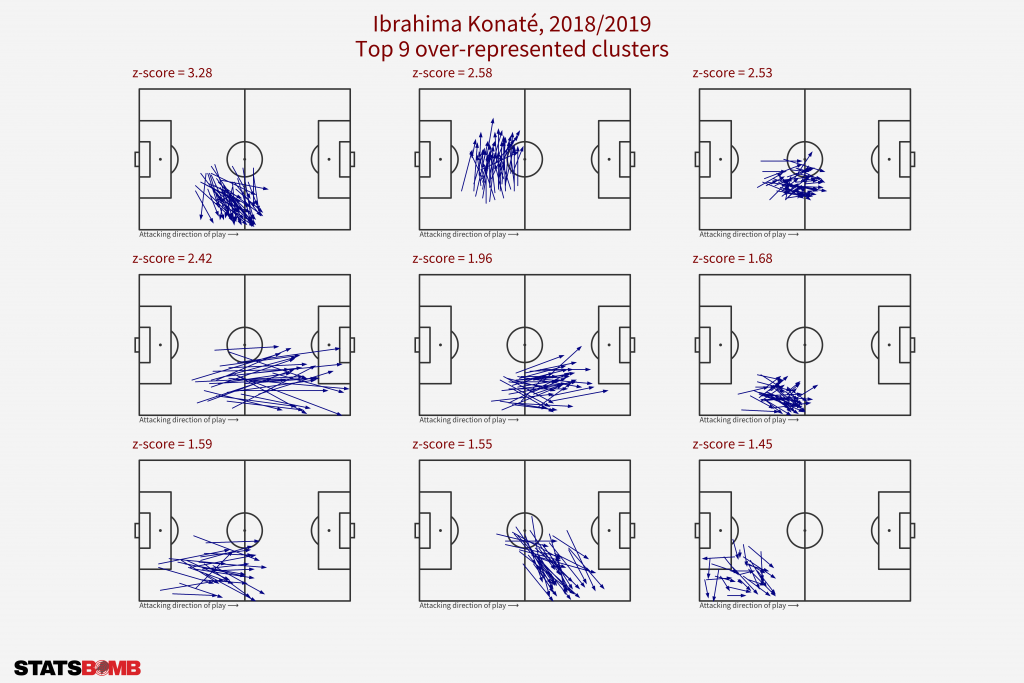
Konaté’s passing range appears somewhat limited as he is heavily skewed towards short and/or sideways passes. The longer passes he does play tend to be lower percentage vertical ones down the line that tend not to feature in Liverpool’s centre back profile. Demonstrating the ability to play those progressive diagonal passes out towards the full-backs that are so favoured by the Liverpool backline would be a very encouraging sign.
Projection
With Manchester City as the firm favourites for the title, the bookies have Liverpool in the high-70s in terms of points, alongside Chelsea, which seems a reasonable median expectation (I’d probably go a bit higher, but red-tinted spectacles and everything). We saw the floor of that kind of range last season, and they still finished third and made a Champions League quarter-final. The path to stronger performances and both domestic and European contention is also clear: a more normal level of injuries, the best forward line in the league finishing their chances, and van Dijk returning from injury somewhere close to his previous performance levels.
Taking last season as an anomaly, Liverpool have consistently put themselves within striking distance of glory and, if a team is to challenge City, then the team that has averaged 88 points over the last three seasons seems the most probable candidate. But they’ll need to hit their ceiling once more.
Want to read about another team? The rest of our Premier League season previews can be found here
If you're a club, media or gambling entity and want to know more about what StatsBomb can do for you, please contact us at Sales@StatsBomb.com
We also provide education in this area, so if this taste of football analytics sparked interest, check out our Introduction to Football Analytics course
Follow us on Twitter in English and Spanish and also on LinkedIn
